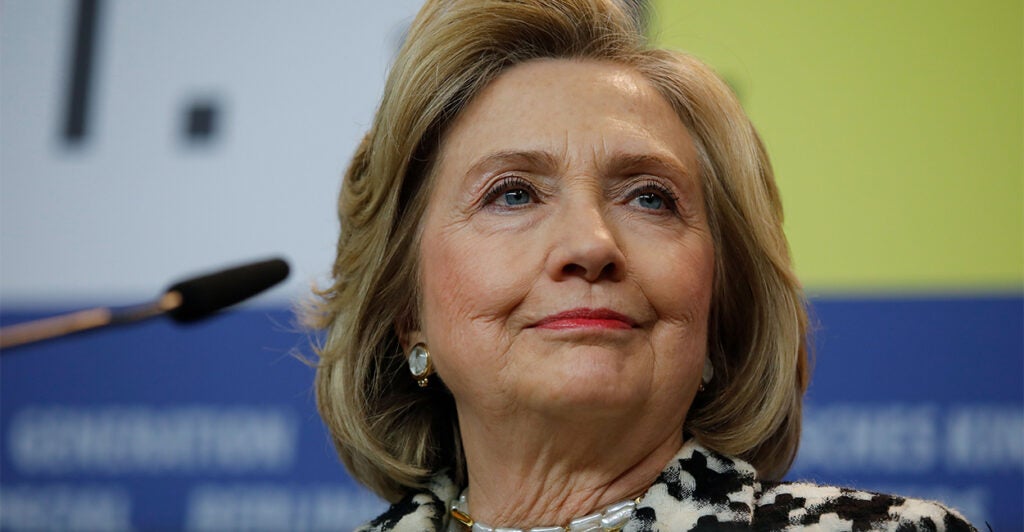As Ambassador Rahm Emanuel once said as chief of staff to President Barack Obama, “You never want a serious crisis to go to waste.” Hillary Clinton is taking this to heart, using summer temperatures to justify Democrats’ profligate spending on green energy in the Inflation Reduction Act.
No matter that hot summer days in cities do not equate to climate change; that climate change models are poor predictors of warming; and that the incidence of hurricanes and tornadoes has not increased over time. A better use of funds would be to buy air conditioners to keep people cool during hot months.
The Sixth U.N. Intergovernmental Panel on Climate Change report stated that the “attribution of certain classes of extreme weather (e.g., tornadoes) is beyond current modelling and theoretical capabilities.”
It is well known that measures of warming are biased upward because temperature readings are taken in urban rather than rural areas and the world has seen increased urbanization over the past centuries. Solar activity also plays a role in warming.
Despite measurement problems, the “climate crisis” is the stated rationale for interfering with Americans’ choices of cars, appliances, and power generation sources. The “climate crisis” is why California aims to allow only battery-powered vehicles to be sold in the state starting in 2035 and why the Environmental Protection Agency has proposed rules that would require two-thirds of new passenger vehicle sales to be electric vehicles by 2032.
But what if we were not in a climate crisis after all, and trillions of dollars in planned tax credits and green energy expenditures are a misuse of taxpayer resources?
New York University professor Steven Koonin has presented data in his bestselling book, “Unsettled,” to show that the science is not as settled as many politicians would have us believe.
Koonin is a respected academic physicist. He was former undersecretary for science at the U.S. Department of Energy under President Barack Obama when Hillary Clinton was secretary of state. His portfolio included the climate research program and energy technology. He has a bachelor of science in physics from Caltech and a doctorate in theoretical physics from MIT. Koonin taught for 30 years at Caltech and has published 200 peer-reviewed scientific papers.
Koonin finds that daily record high temperatures have not increased over the past 100 years and daily record lows have become less common. This is directly at variance with media headlines.
Although wildfires made headlines this summer, global areas burned by wildfires have shown a downward, rather than an upward, trend. Tornado activity in the United States has declined since 1970.
The media covers climate change as though doomsday is approaching. Bad news sells, and well-funded organizations support the crisis message.
Take Covering Climate Now, founded by the Columbia Journalism Review and The Nation in 2019 with over 460 news and media partners, including Reuters, Bloomberg, CBS, NBC, and MSNBC. Covering Climate Now helps “to make climate a part of every beat in the newsroom.” It advises news outlets under its “best practices” to show photos of people frazzled in the heat rather than enjoying themselves in a pool. It states, “In the year 2023, there is simply no good-faith argument against climate science.”
“Consensus” on the “climate crisis” as presented by news outlets is not a scientific consensus at all. We need to follow scientific knowledge as it develops and carefully consider the costs and benefits of different alternatives.
This is particularly important for the transportation and energy sectors, which bear the brunt of costs for the “climate crisis.” People need these sectors to be highly reliable and cost effective. Making large changes to transportation and energy in a short period of time decreases reliability and increases prices dramatically.
Even if rising “greenhouse gas” emissions were affecting the climate, actions by the United States will not be helpful in the absence of changes by China and India, the world’s biggest emitters of greenhouse gases. If the United States were to get rid of all fossil fuel emissions, this would only reduce global temperatures by 0.2 degrees Celsius by 2100.
China, India, Africa, and Latin America are all increasing emissions, and President Xi Jinping announced last week that China has no plans to reduce emissions after 2030, contrary to the Paris Agreement that his nation signed on to.
In fact, American carbon emissions have declined by 1,000 million metric tons over the past 16 years while Chinese emissions have risen by 5,000 million metric tons. Further reductions in U.S. emissions, with their associated costs, will just be a drop in the global bucket. Polls show that many believe protecting the environment is less important to Americans than economic growth.
Additionally, the message that government can create more total jobs by requiring more costly technology is seductive but empty. Yes, some Americans might be employed building the technology, but others lose jobs due to more expensive energy causing businesses to cut back on production and transportation or causing them to cut jobs directly to pay for increasing energy costs.
The EPA’s proposed tailpipe and power plant regulations will reduce economic growth by raising energy prices. As well as reducing jobs in the auto industry—GM, Ford, and Stellantis are closing down traditional auto plants—EPA regulations will also discourage energy-intensive manufacturing.
Raising the cost of energy at any time is poor economic policy, but especially when economic growth is slow. U.S. annualized gross domestic product growth was 2% in the first quarter of 2023, with data for the second quarter expected on Thursday. It’s summer, but now is not the time for Democrats to use the excuse of climate change to slow the economy further with more regulations.
Have an opinion about this article? To sound off, please email letters@DailySignal.com, and we’ll consider publishing your edited remarks in our regular “We Hear You” feature. Remember to include the URL or headline of the article plus your name and town and/or state.
